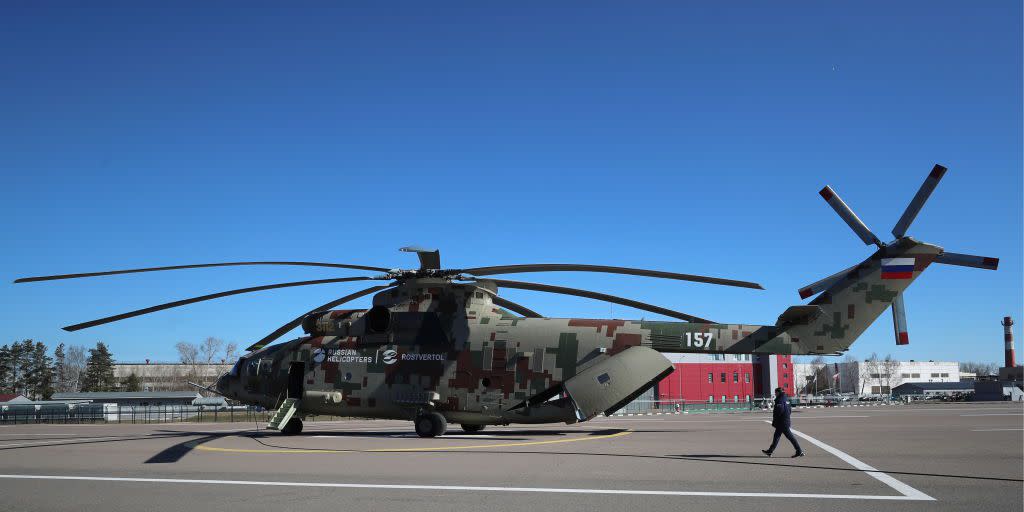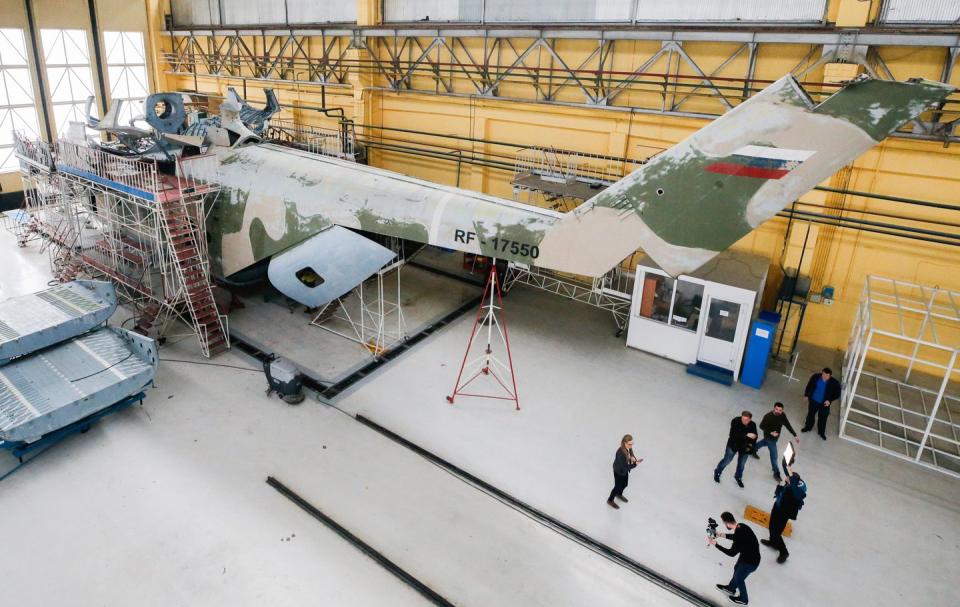Russia Is Still Selling the World’s Largest Helicopter, 40 Years After First Flight

Nearly forty years after its debut, the Mi-26 heavy lift transport, known to NATO as the “Halo,” is still the largest helicopter in the world. Built by Russian Helicopters, a subsidiary of Russian industry giant Rostec, the Mi-26 carries more cargo or people than anything in the West, even the American Chinook and Sea Stallion. The massive helicopter is even being used as the basis for a new Russian-Chinese heavy lift helicopter, the AHL.
According to Defense News, which got to tour the Russian Helicopters factory plant outside Moscow, the company is keeping busy refurbishing older Mi-26s for the Russian Army, marketing the new Mi-26T2V, and consulting with Chinese aviation giant AVIC on its new heavy helicopter, the Advanced Heavy Lift (AHL) helicopter.

First produced in 1980, the Mi-26 was designed and built by the Soviet Union. The Mi-26 was huge, with a fuselage of 110 feet long and a maximum overall length, with rotors spinning, of 131 feet. The “Halo” can lift up to 44,092 pounds of cargo, or 22 tons. The cavernous cargo cabin measures 39.6 feet long by 10.6 feet wide, with a drive-on, drive-off rear loading ramp for embarking cargo and wheeled vehicles. Alternately, the Mi-26 can accommodate 82 combat troops or more than a hundred civilians.
The Mi-26 has had an unusual career. Mi-26s were used during the Soviet occupation of Afghanistan in the 1980s, supporting anti-guerrilla operations and resupplying Red Army forces in the field. In 1986, Mi-26s were used to drop sand, clay, and other protective materials on the Chernobyl nuclear disaster. (Those helicopters were never flown again due to radioactive contamination.) After the breakup of the USSR, Halo helicopters were involved in the fighting in Tajikistan, Armenia, Azerbaijan, Georgia, and Chechnya and Dagestan. In 2002, a Mi-26 carried a crashed U.S. Army CH-47 Chinook heavy lift helicopter from Gardiz, Afghanistan to Bagram air base.
The new Mi-26T2V moves the aircraft from the analog to the digital era, allowing it to take advantage of new navigation and communications technologies while shrinking crew size. New computers and data input panels replace analog instruments, and a new laser inertial navigation system, GPS and Russian GLONASS satellite navigation systems allow the elimination of the original human navigator. Other digital improvements eliminate the flight engineer position. Helicopters destined for military service include an electro-optical sensor turret, missile warning receivers, an infrared jammer, and a flare launcher to distract infrared-guided missiles.
AVIC Mil AHL "advanced heavy lift" helicopter in revised form. pic.twitter.com/31cRd26Wsm
- @Rupprecht_A (@RupprechtDeino) September 13, 2017
The Sino-Russian AHL will be smaller than the Mi-26, with a 15-ton payload capacity as opposed to the Mi-26's 22-ton limit, but with the ability to operate in China’s high-altitude mountainous regions, including Tibet and Xinjiang. Like car engines, helicopter engines lose efficiency in high altitude environments due to a lack of oxygen. The AHL is almost certainly destined for service in the People’s Liberation Army, where it would have the range to fly directly to Taiwan, unload 50 combat troops or a handful of light ground vehicles, and then return to the mainland for reloading and refueling.
('You Might Also Like',)

